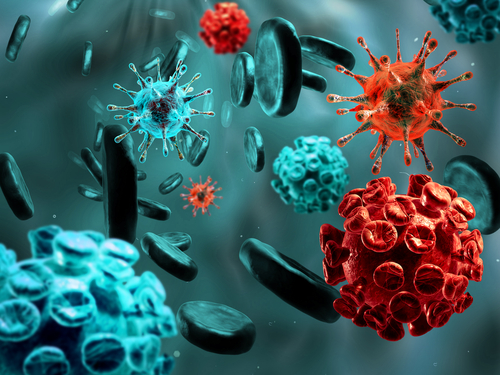Recent Advances To Treat Brain Disorders in Mucopolysaccharidoses Outlined in Review

Several approaches are currently being investigated to allow the delivery of novel therapeutic agents into the central nervous system and target neurological symptoms in patients with mucopolysaccharidosis disorders, including Sanfilippo syndrome.
Although patients with mucopolysaccharidosis (MPS) disorders can suffer from neurological disorders that include neurocognitive decline and behavioral problems, treating these manifestations remains challenging, mainly due to the blood–brain barrier — a term used to describe a highly selective semipermeable membrane barrier that separates the circulating blood from the brain and body fluid of the central nervous system (CNS).
The blood-brain barrier acts as a protective barrier to preserve central nervous system balance and keep it free of toxic substances, making it challenging to deliver certain molecules, including those that might be therapeutic, to the necessary sites.
One of the greatest challenges in developing treatment approaches for neurological disorders is to devise ways to circumvent this barrier and deliver therapeutic agents directly where they are needed.
A review study, “Treatment of brain disease in the mucopolysaccharidoses,” published in the journal Molecular Genetics and Metabolism, summarized recent findings and potential future treatments pertaining to targeting brain disease in MPS disorders, including Sanfilippo.
Stem cell transplant
Among the techniques that can be used to circumvent the blood-brain barrier is the use of donor stem cells containing the enzymes lacking in any particular MPS disorder, which can cross this barrier. This so-called hematopoietic stem cell transplantation has the potential to improve some symptoms in MPS patients, as has been demonstrated by several studies in patients with MPS type I (Hurler syndrome), with varying degrees of neurological outcomes. The approach has been used in other MPS disorders including MPS II (Hunter syndrome), III (Sanfilippo), and VII (Sly syndrome), but with a lower improvement in neurological deterioration.
Enzyme replacement therapy
Another approach is to deliver the missing enzyme directly into the cerebrospinal fluid to make up for its deficiency in a process known as enzyme replacement therapy, or ERT. This approach has proven effective in terms of compensating for enzyme loss and reducing neurological damage in experimental animal models.
Currently ongoing clinical trials testing ERT’s efficiency in Sanfilippo patients have so far reported this method is safe and well-tolerated, with some patients experiencing neurological benefits.
Shire has tested the safety and tolerability of sulfamidase ERT in Sanfilippo type A patients, with Phase 1/2 trial (NCT01155778) results demonstrating the treatment was generally safe but required cautious interpretation of efficacy results. The company is currently enrolling patients who participated in a previous open-label, multicenter Phase 2 trial (NCT02060526) in its Phase 2 extension study (NCT02350816) to evaluate the long-term safety and effectiveness of its recombinant enzyme.
BioMarin also is developing an ERT targeting Sanfilippo type B, which effectively reduced heparan sulfate levels. The company is recruiting up to 33 participants for an open-label Phase 1/2 trial (NCT02754076) being conducted in Germany, Spain, Taiwan, Turkey, and the United Kingdom.
According to the authors, several centers also combine hematopoietic stem cell transplantation with ERT, which improves the patient’s condition before transplant.
Gene therapy
A third approach involves delivering the correct gene into cells so they can produce the normal enzyme themselves. This approach, called gene therapy, has been used in animal models of MPS I, IIIA, IIIB, and VII.
The gene can alternatively be introduced into cells outside the body that can then be injected back into patients. This approach has been used and shown to have some effects in MPS I, II, and IIIA animal models.
Similar to ERT, gene therapy also is meant to overcome the blood-brain barrier challenge, ensuring a targeted delivery to brain cells.
A Phase 1/2 study (ISRCTN19853672) in seven patients with Sanfilippo type B showed that gene therapy was safe and well-tolerated, and could effectively target brain cells. The best results, including cognitive decline, were observed in younger patients, suggesting this type of treatment should be administrated in early stages of the disease.
Abeona Therapeutics is recruiting Sanfilippo type A patients for a Phase 1/2 trial (NCT02716246) to evaluate its gene therapy candidate, scAAV9.U1a.hSGSH.
Other approaches
Another approach involves “camouflaging” the therapeutic agent to be delivered by linking it to a molecule that normally passes through the blood-brain barrier, such as an antibody. This method, referred to as the Trojan horse strategy, has been used in preclinical animal models of MPS I and IIIA, and two Phase 1 trials are currently assessing it in MPS I (e.g., NCT03053089) and MPS II (NCT02262338) patients.
An alternative strategy, called nano-enabled therapy, uses small particles known as nanoparticles to cross the blood-brain barrier. “Several studies in patients with Alzheimer’s and Parkinson’s disease showed promising results with nano-enabled therapies for the treatment of CNS disease,” the researchers wrote.
Small molecules that can also cross the blood-brain barrier and possess therapeutic potential themselves can be used to target brain disease in MPS patients. These molecules might target the enzyme pathway that is affected in the disease (e.g., genistein), might correct the gene abnormality by interfering with the gene-processing machinery (e.g., chloramphenicol), or might help to restore the normal structure of the enzyme (known as chaperones).
Overall, there are currently several approaches that can be used to overcome the hurdle that is the blood-brain barrier. However, the researchers conclude that “due to the variety of somatic and neurological manifestations present in MPS patients, combination therapy will likely provide the optimal results. A better understanding of additional pathological changes and abnormalities will allow the development of synergistic therapies.”






